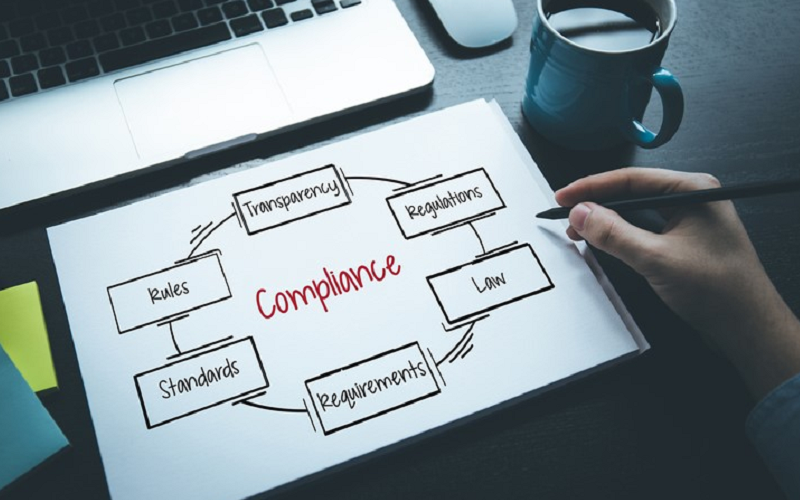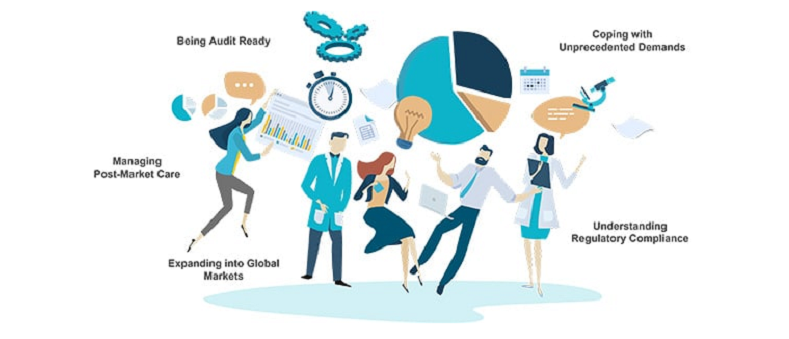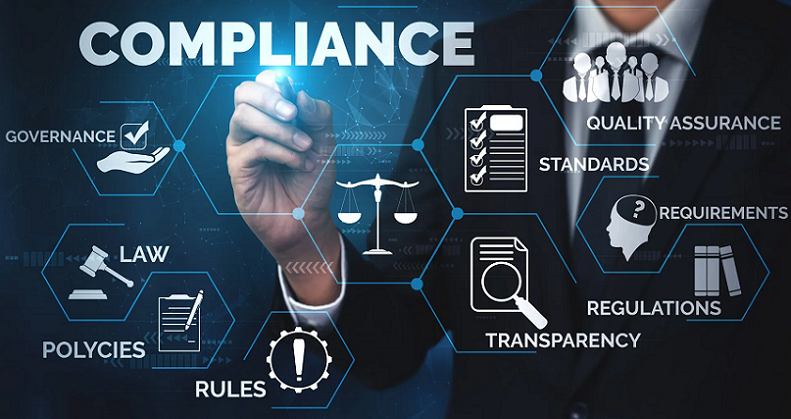
In the altruistic realm of nonprofit organizations, the journey towards making a lasting impact often intertwines with the complexities of regulatory compliance. While the heartbeat of a nonprofit is its mission, the backbone is the regulatory framework it adheres to, ensuring transparency, trust, and legitimacy. However, navigating the labyrinth of rules, guidelines, and ever-evolving regulations can be as daunting as it is necessary.
Contents
- Advantages of Nonprofits Navigating Regulatory Compliance
- Disadvantages and Challenges of Nonprofits Navigating Regulatory Compliance
- Best Practices for Nonprofits Navigating Regulatory Compliance
- References
When we consider the notion of regulatory compliance, it’s easy to become engrossed in the challenges. However, adhering to these regulations offers numerous advantages that propel nonprofits towards achieving their mission more effectively. Beyond simply meeting legal mandates, proper compliance can lay the foundation for trust, opportunity, and long-term success.
Maintaining Trust with Stakeholders
Trust is the cornerstone of any successful nonprofit organization. By adhering to regulatory standards, organizations demonstrate a commitment to accountability and transparency.
Donors’ Confidence
Regular donors and potential contributors are more inclined to financially support an organization when they’re assured of its legitimacy and responsible management. By maintaining compliance, nonprofits can confidently showcase their transparency, thus fostering greater donor trust and engagement.
Beneficiaries’ Assurance
Those who benefit directly from the nonprofit’s services need to trust the institution’s reliability. A track record of consistent regulatory compliance ensures that the organization is dedicated to its mission without compromising on ethical or legal standards.
Ensuring Longevity and Stability of the Organization
Consistent compliance isn’t merely a periodic task — it’s an investment in the nonprofit’s future.
Avoidance of Legal Penalties
One of the most immediate benefits of rigorous compliance is the avoidance of hefty legal penalties. Noncompliance can lead to fines, sanctions, or even the loss of nonprofit status. By staying compliant, organizations safeguard themselves from such detrimental consequences.
Continued Eligibility for Tax Exemptions
Nonprofits often enjoy tax-exempt status, contingent on strict adherence to certain regulatory guidelines. By regularly ensuring that they’re in line with these rules, nonprofits can ensure they maintain these financial benefits, channeling more funds towards their cause [1].
Access to Grants and Financial Opportunities
In the competitive landscape of nonprofit funding, regulatory compliance can serve as a compelling differentiator.
Meeting Requirements of Grantors
Many grant-making bodies have stringent compliance requirements. By showcasing a strong record in this domain, nonprofits can position themselves favorably to secure crucial funding for their projects.
Leveraging Compliance for Funding Pitches
Beyond just meeting the basic prerequisites for funding, a robust compliance record can be a valuable asset when making pitches to potential funders. It presents the organization as reliable, trustworthy, and well-managed—qualities that resonate with donors and investors alike.
Reinforcing Organizational Transparency and Integrity
An unwavering commitment to regulatory compliance sends a clear message about the nonprofit’s values.
Clear Financial Reporting
Regular and accurate financial reporting is often a key element of regulatory compliance. Such practices not only satisfy legal requirements but also promote a culture of transparency within the organization. Stakeholders, from staff to supporters, can have a clear view of the nonprofit’s financial health and operations.
Ethical Standards and Practices
Compliance often goes hand in hand with ethical operations. By navigating the nuances of regulations, nonprofits demonstrate a dedication to ethical practices, reinforcing their integrity and dedication to the greater good [2].

While the advantages of regulatory compliance are evident, it’s also essential to address the other side of the coin. Navigating the complex world of regulations isn’t always a walk in the park. Despite the best intentions, nonprofits often encounter challenges that can strain resources and test resilience.
The Complexity of Regulatory Frameworks
It’s no secret that the regulatory landscape can be a maze, varying across jurisdictions and often fraught with ambiguity.
Varying Requirements at Local, State, and Federal Levels
Different levels of government, from local to federal, can have distinct compliance regulations for nonprofits. This multi-tiered system can be difficult to navigate, especially for organizations operating across multiple regions or on a national scale.
Keeping Up with Frequent Regulatory Changes
Regulatory environments are dynamic. Laws evolve, and new regulations emerge, demanding organizations to be perpetually updated. This fluidity can be challenging, as nonprofits must be on their toes to ensure continuous alignment with the latest requirements.
Financial Burdens
The financial implications of compliance, both direct and indirect, can pose significant challenges.
Costs of Compliance Programs and Training
Implementing comprehensive compliance programs often requires financial investments. From software to specialized staff training sessions, ensuring full compliance can strain a nonprofit’s budget, diverting funds from other crucial areas.
Potential for Unforeseen Penalties
Even with the best efforts, inadvertent noncompliance can lead to penalties. These unforeseen expenses can be damaging, especially for nonprofits operating on tight budgets [3].
Time and Resource Consumption
Compliance doesn’t just have financial implications—it also demands time and attention, which can be a luxury for some organizations.
Diverting Focus from Core Organizational Objectives
Compliance activities, though crucial, can sometimes divert an organization’s focus from its primary mission-related activities. Striking a balance becomes paramount but also challenging.
Necessity of Ongoing Monitoring and Reporting
Regular monitoring and extensive reporting can be time-consuming. For many nonprofits, especially smaller ones with limited staff, this can mean long hours dedicated solely to compliance-related tasks.
Risks of Overregulation
While regulations aim to ensure transparency and ethical operations, there’s also a risk of stifling innovation and agility.
Potential Stifling of Innovative Programs and Strategies
Overly stringent regulations can sometimes limit a nonprofit’s ability to try innovative strategies or adopt unconventional approaches to solve problems, leading to a potential stagnation in growth or impact.
Red Tape and Bureaucracy Challenges
Overregulation can result in increased bureaucratic processes, slowing down project implementations and other mission-critical activities. This could impede timely response to evolving needs or opportunities.

Understanding the challenges of regulatory compliance is just one side of the equation. The other, equally vital side, is knowing how to mitigate these challenges effectively. Embracing a few strategic best practices can significantly ease the burdens and complexities of compliance, positioning nonprofits not just to survive, but to thrive [4].
Regular Training and Workshops
Knowledge is power, especially in the realm of regulatory compliance. Ensuring that all stakeholders are well-informed is a primary step in avoiding inadvertent pitfalls.
Importance of Continued Education for Staff and Volunteers
Regularly updating the team on changing regulations ensures everyone is on the same page. Workshops, seminars, or internal training sessions can equip staff and volunteers with the knowledge needed to maintain compliance proactively.
Leveraging External Experts and Consultants
It’s often beneficial to bring in external experts who specialize in nonprofit compliance. These professionals can provide insights, clarify doubts, and offer tailored advice, helping organizations navigate the intricacies of regulations with greater confidence.
Utilizing Technology and Software Solutions
In our digital age, technology is an indispensable ally for nonprofits seeking to simplify their compliance processes.
Compliance Tracking Software
There are myriad software solutions designed to help organizations track and maintain their compliance requirements. These tools often come with features like reminders, report generation, and audit trails, ensuring nothing slips through the cracks.
Financial Reporting and Analysis Tools
Accurate financial reporting is a cornerstone of many compliance regulations. Leveraging specialized software can aid in creating transparent, precise, and timely financial reports, eliminating manual errors and inefficiencies [5].
Building a Culture of Compliance within the Organization
Compliance isn’t just a set of rules—it’s a mindset. Cultivating a culture that values compliance can significantly reduce risks and ensure smoother operations.
Leadership’s Role in Setting the Tone
The commitment to compliance must start at the top. When leadership showcases a clear dedication to adhering to regulations, it naturally trickles down to all levels of the organization, fostering a collective commitment.
Inculcating Compliance as a Core Value
Beyond just a regulatory necessity, compliance should be viewed as a reflection of the organization’s integrity and commitment to its mission. Regular discussions, highlighting success stories, and recognizing team members who exemplify compliance can help ingrain it as a core organizational value.
Seeking Collaborations and Partnerships
There’s strength in numbers. Collaborating with like-minded organizations or experts can provide added support and insights in the compliance journey.
Learning from Peer Organizations
Networking with other nonprofits can offer valuable insights into best practices, tools, and strategies. Shared experiences and collective wisdom can simplify the process and uncover innovative solutions.
Sometimes, banding together to address particularly challenging regulations can be beneficial. Joint workshops, shared resources, or even collaborative lobbying efforts can amplify the voice and effectiveness of nonprofits in the regulatory realm.
References
[1] Common Compliance Issues for Nonprofits: How To Address Them
[2] 5 Most Common Compliance Issues Faced by Nonprofits
[3] Regulatory Compliance for Nonprofits
[4] 3 Top Compliance Challenges for Nonprofits + Expert Advice
[5] Regulations and Compliance Issues for Nonprofit Organizations
